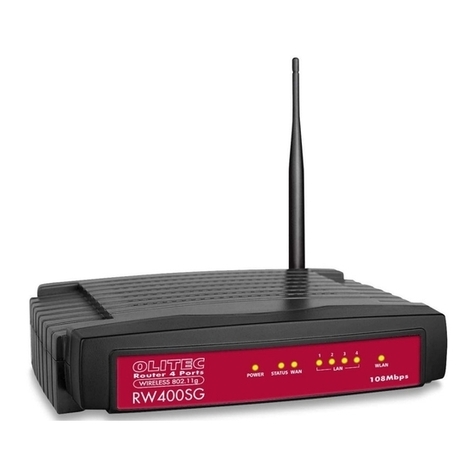Chapter 2: Introduction...................................................................................................... 1
2.1 Overview of the Router ........................................................................................ 1
2.2 Features............................................................................................................... 1
2.3 Panel Layout ........................................................................................................ 2
2.3.1 The Front Panel ......................................................................................... 2
2.3.2 The Rear Panel.......................................................................................... 2
Chapter 3: Connecting the Router .................................................................................... 4
3.1 System Requirements.......................................................................................... 4
3.2 Installation Environment Requirements................................................................ 4
3.3 Connecting the Router ......................................................................................... 4
Chapter 4: Quick Installation Guide................................................................................... 6
4.1 TCP/IP configuration ............................................................................................ 6
4.2 Quick Installation Guide ....................................................................................... 7
Chapter 5: Configuring the Router ...................................................................................11
5.1 login ....................................................................................................................11
5.2 Status ..................................................................................................................11
5.3 Quick Setup ....................................................................................................... 12
5.4 Network.............................................................................................................. 12
5.4.1 LAN.......................................................................................................... 13
5.4.2 WAN......................................................................................................... 13
5.4.3 MAC Clone .............................................................................................. 18
5.5 Wireless ............................................................................................................. 19
5.5.1 Wireless Settings ..................................................................................... 19
5.5.2 MAC Filtering ........................................................................................... 22
5.5.3 Wireless Statistics .................................................................................... 24
5.6 DHCP................................................................................................................. 25
5.6.1 DHCP Settings......................................................................................... 25
5.6.2 DHCP Clients List .................................................................................... 26
5.6.3 Address Reservation................................................................................ 27
5.7 Forwarding ......................................................................................................... 28
5.7.1 Virtual Servers ......................................................................................... 28
5.7.2 Port Triggering ......................................................................................... 29
5.7.3 DMZ ......................................................................................................... 31
5.7.4 UPnP ....................................................................................................... 32
5.8 Security.............................................................................................................. 33
5.8.1 Firewall .................................................................................................... 33
5.8.2 IP Address Filtering.................................................................................. 34
5.8.3 Domain Filtering....................................................................................... 35
5.8.4 MAC Filtering ........................................................................................... 37
5.8.5 Remote Management .............................................................................. 38
5.8.6 Advanced Security ................................................................................... 39
5.9 Static Routing..................................................................................................... 41
5.10 DDNS............................................................................................................... 42
5.10.1 Dyndns.org DDNS ................................................................................. 42




























